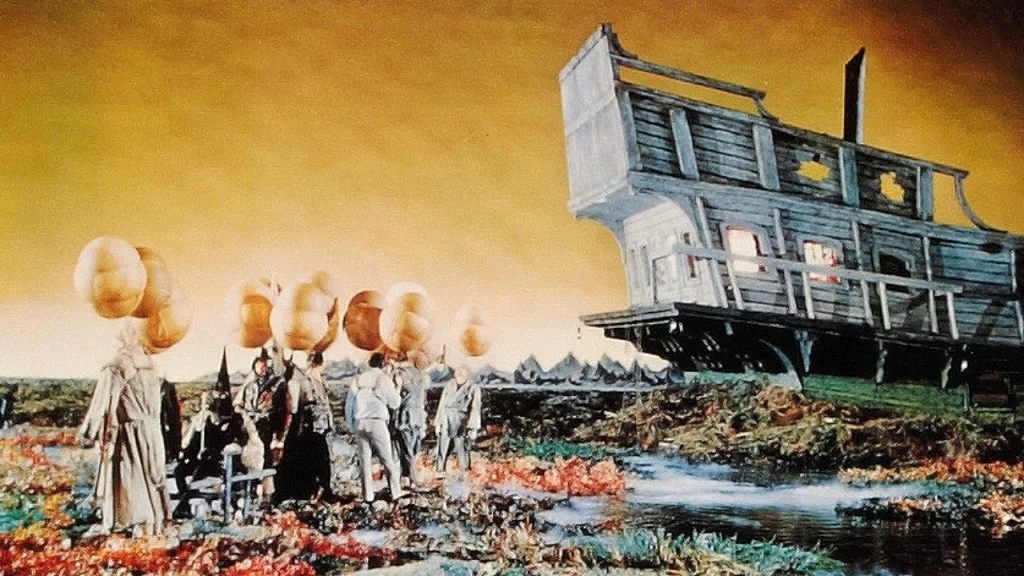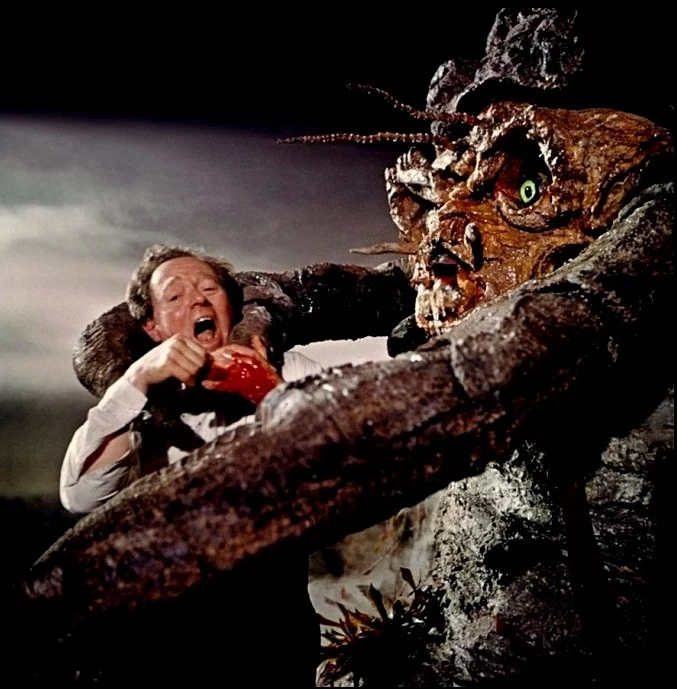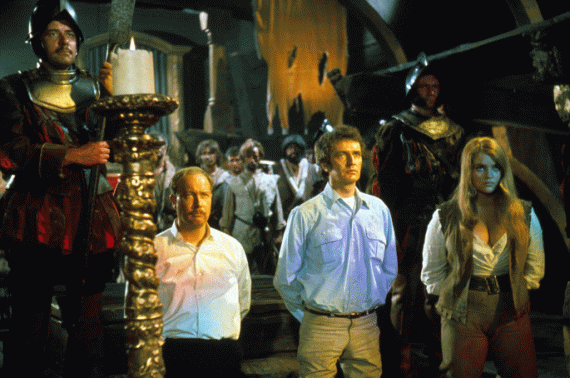
Hammer Film Productions is an iconic film production company. Based in the United Kingdom, the company was founded in 1934, and is probably best known for its series of “Hammer Horror” films it produced from the mid-1950s through the late 1960s. From 1950 until 1969, the company produced a whopping 147 different feature-length movies.
Hammer’s most popular films are names you are most likely familiar with: ‘Frankenstein,’ ‘Dracula,’ ‘The Mummy’ (along with their various sequels), ‘One Million Years B.C.,’ and ‘The Phantom of the Opera.’ But the company also has a plethora of other great films that probably aren’t on your radar. Among these is the trippy, kitschy movie-watching experience that is 1968’s ‘The Lost Continent.’

A blend of science fiction and horror film, ‘The Lost Continent’ is one of the first films to effectively use the “ending as the opening” gimmick, where the final chronological scene of the story is actually used as the opening shot of the film. Immediately following the ultra-‘60s opening credits, replete with popular British band The Peddlers crooning the title-tracked theme song, we are introduced to the crew and passengers of the dilapidated cargo ship Corita as they gather on deck to witness Captain Lansen presiding over a burial at sea. As the camera pans across, we are introduced to a group of characters that seemed to have gathered for an ocean cruise across the borders of time: hooded priests, pirates, Spanish conquistadores, seamen, and beautiful women are all present on deck to witness the funeral rites. As the body is pitched overboard, Lansen’s internal dialogue wonders “What happened to us? How did we all get here?” The screen gets wavy in the classic “flashback” form, and the viewer is whisked back in time to the start of the tale.
To go too far into detail on the finer points of the convoluted plot line would be to ruin the movie-watching experience for the uninitiated viewer, but suffice it to say that the Corita’s journey is indeed a long and strange one. The ship leaves port in Freetown, South Africa in quite the hurry, much to the relief of both Captain Lansen and his motley assortment of passengers, each seemingly with their own shady reasons for travelling on this subpar vessel rather than a standard passenger ship. Since they are purposefully avoiding all the major shipping and commercial travel lanes, it isn’t long before the ship finds itself off-course (an impending hurricane does little to help matters).
Through a series of haphazard events, passengers and crew are forced to abandon ship; when their lifeboats oddly return them to the still-intact Corita, it’s just the beginning of the strange events that are to follow. They soon become mired in a murky sea amidst a graveyard of ships, and the characters engage in a series of encounters each more fantastic than the last, including giant octopi, seaweed with a mind of its own, marauders wearing strange sea-walking shoes and lighter-than-air balloon harnesses on their shoulders, descendants of the Spanish Inquisition, and even giant, rocky crustaceans fighting each other. The tale concludes in a maddeningly open-ended fashion that will leave viewers wondering far after the credits roll.

The film initially began under the direction of Leslie Norman, but for reasons unknown he was quickly replaced by Michael Carreras, the son of Hammer’s founder, James Carreras. The younger Carreras directed a total of nine Hammer films, including what is largely believed to be the first Spaghetti-Western ever produced, ‘The Savage Guns.’ Eagle-eyed viewers of ‘The Lost Continent’ will notice that the screenplay was written by “Michael Nash,” which is actually one of Carreras’ pseudonyms; why he chose to use an alternate name in the credits is anyone’s guess!
Since much of the film shoot took place on the boat with exterior shots that showed the seascape, the filming process necessitated a very specific type of set to be built for the movie. A huge tank was constructed at the famed Elstree Studios in England; holding a whopping 175,000 gallons of water, the tank held the Corita life-size set as well as some of the other boat and island settings that appear in the movie. This may not sound like a terribly impressive feat now in the days of CGI, but back in the mid-1960s, this was quite an impressive investment into a horror film. Fortunately, Hammer was able to make many of their movies profitable, and ‘The Lost Continent’ was such a unique viewing experience that viewers have kept it alive as a cult favorite to this day.

The combination of the unique plot (even if it is difficult to follow at times), eclectic characters, and a healthy mix of fantastic elements that don’t immediately seem to go together but somehow do, all make for a one-of-a-kind film that, quite simply, has to be seen to be believed and appreciated. ‘The Lost Continent’ is now available on DVD, allowing the audience of the digital age to enjoy this truly distinctive movie.
Tony Schaab wonders where Green Rangers come from – I guess if a Yellow Ranger and a Blue Ranger love each other very much… A lover of most things sci-fi and horror, Tony is an author by day and a DJ by night. Come hang out with Tony on Twitter or follow him on Facebook to hear him spew semi-funny nonsense and get your opportunity to finally put him in his place.
